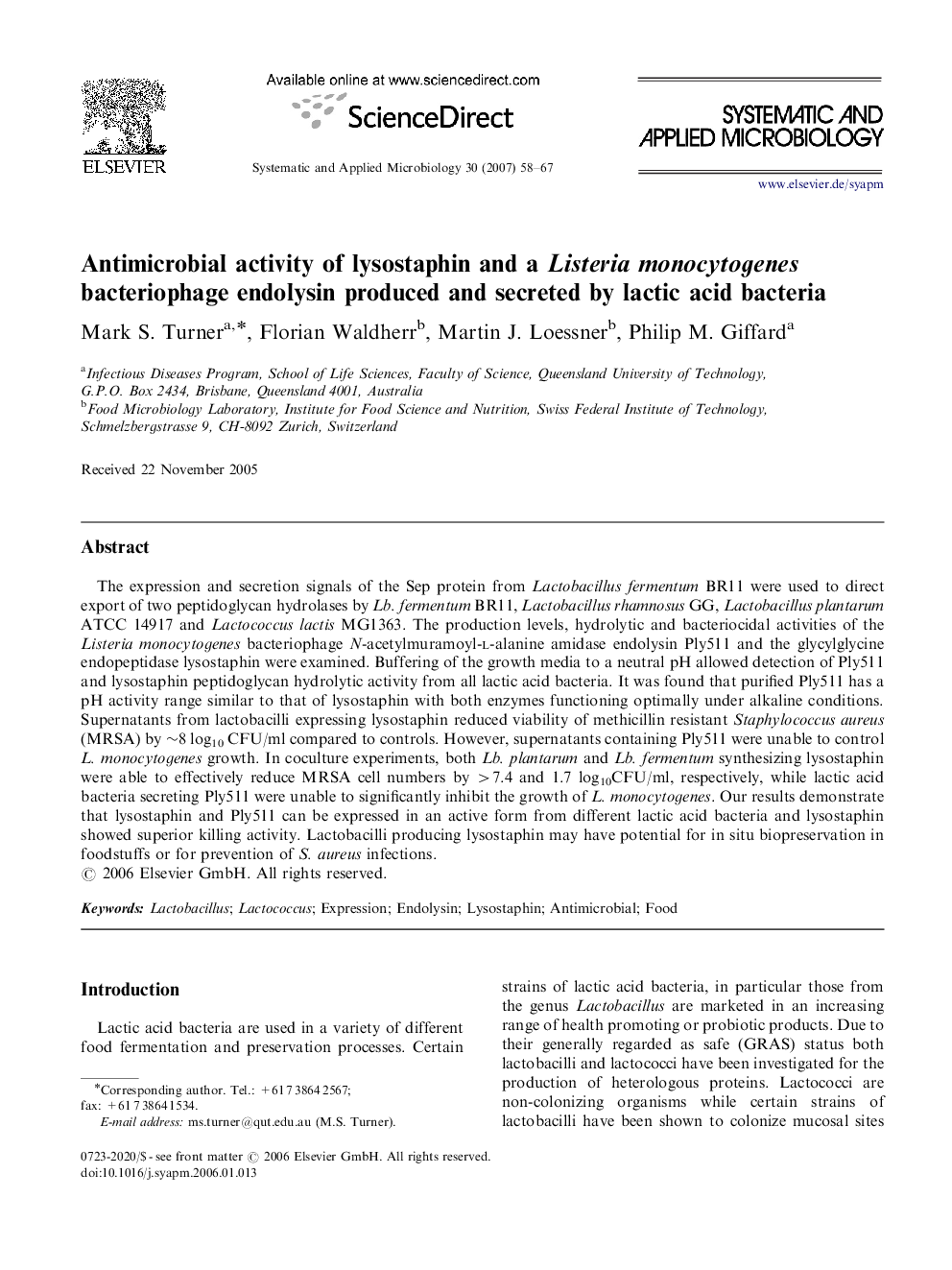| Article ID | Journal | Published Year | Pages | File Type |
|---|---|---|---|---|
| 2063503 | Systematic and Applied Microbiology | 2007 | 10 Pages |
The expression and secretion signals of the Sep protein from Lactobacillus fermentum BR11 were used to direct export of two peptidoglycan hydrolases by Lb. fermentum BR11, Lactobacillus rhamnosus GG, Lactobacillus plantarum ATCC 14917 and Lactococcus lactis MG1363. The production levels, hydrolytic and bacteriocidal activities of the Listeria monocytogenes bacteriophage N-acetylmuramoyl-l-alanine amidase endolysin Ply511 and the glycylglycine endopeptidase lysostaphin were examined. Buffering of the growth media to a neutral pH allowed detection of Ply511 and lysostaphin peptidoglycan hydrolytic activity from all lactic acid bacteria. It was found that purified Ply511 has a pH activity range similar to that of lysostaphin with both enzymes functioning optimally under alkaline conditions. Supernatants from lactobacilli expressing lysostaphin reduced viability of methicillin resistant Staphylococcus aureus (MRSA) by ∼8 log10 CFU/ml compared to controls. However, supernatants containing Ply511 were unable to control L. monocytogenes growth. In coculture experiments, both Lb. plantarum and Lb. fermentum synthesizing lysostaphin were able to effectively reduce MRSA cell numbers by >7.4 and 1.7 log10CFU/ml, respectively, while lactic acid bacteria secreting Ply511 were unable to significantly inhibit the growth of L. monocytogenes. Our results demonstrate that lysostaphin and Ply511 can be expressed in an active form from different lactic acid bacteria and lysostaphin showed superior killing activity. Lactobacilli producing lysostaphin may have potential for in situ biopreservation in foodstuffs or for prevention of S. aureus infections.
